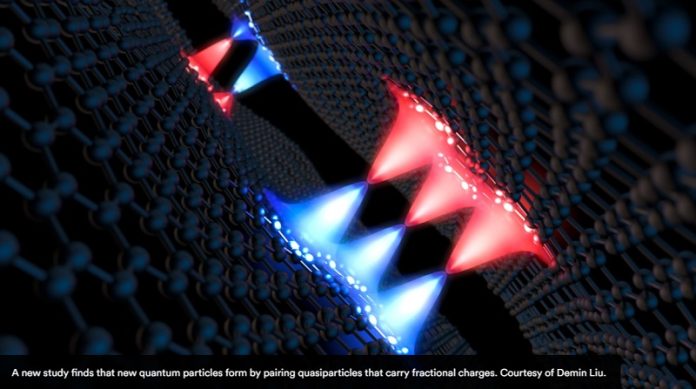
Scientists have discovered a brand-new kind of particle that could help make future quantum computers more powerful and reliable.
This new particle, called a fractional exciton, is a type of “quasiparticle” that behaves in very strange and exciting ways at the smallest scales of matter.
The discovery was made by a team of physicists led by Professor Jia Li at Brown University, with support from the U.S. National Science Foundation.
The research was done at the National High Magnetic Field Laboratory in Florida, and the results were published in the journal Nature.
So, what exactly is a fractional exciton?
It’s not a normal particle like an electron or a proton. Instead, it’s a combination of two tiny pieces of electric charge—one positive and one negative—that are stuck together by their attraction, even though the overall particle has no charge.
These fractional charges are not normally seen in everyday materials but appear under special conditions.
To observe fractional excitons, the scientists used a powerful magnetic field and extremely cold temperatures on layers of ultra-thin materials. This setup created a known effect called the fractional quantum Hall effect, where electrons break apart into smaller charged pieces.
In this case, they found not only negatively charged fractions but also matching positive ones, called “holes.” When these opposite charges came close together, they formed the fractional excitons that had been predicted in theory but never seen before.
According to Li, this is more than just an exciting discovery—it could open new doors for quantum computing. Because these particles behave differently from anything we’ve seen, they might allow scientists to develop new ways of storing and processing information at the quantum level.
This could lead to faster, more stable quantum computers, which are machines that use the strange rules of quantum physics to perform complex tasks that ordinary computers can’t.
“This is just the beginning,” said Li. “We’ve shown that these particles exist, and now we’re going to explore what they can do.”
The team’s next step is to figure out how these particles behave when they interact with one another, and whether scientists can control them. If so, it could lead to exciting advances in how we understand and use the quantum world.



